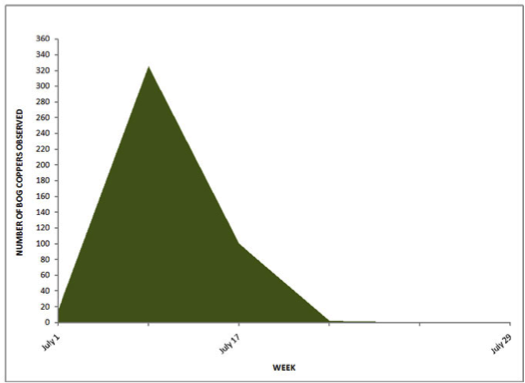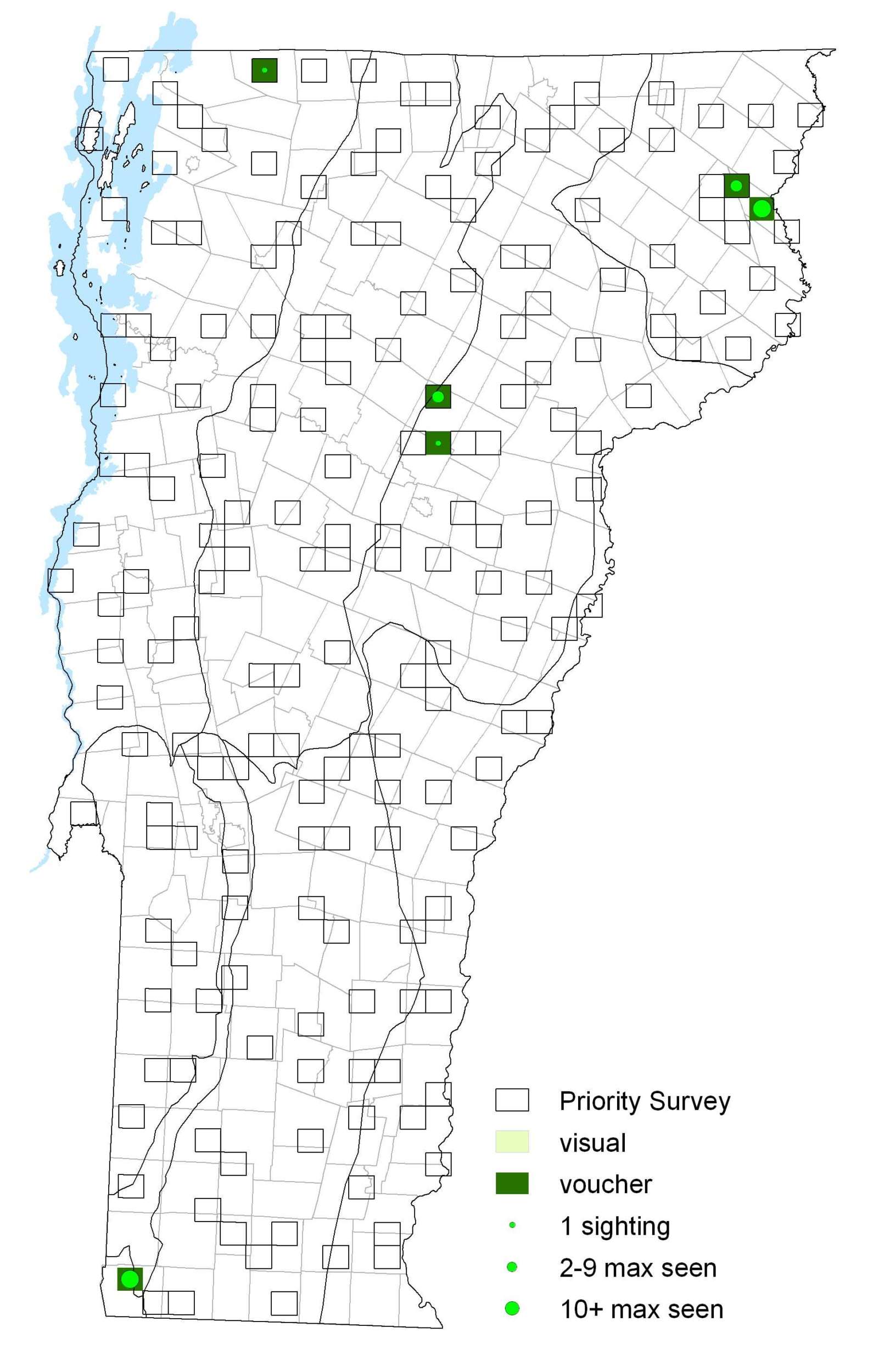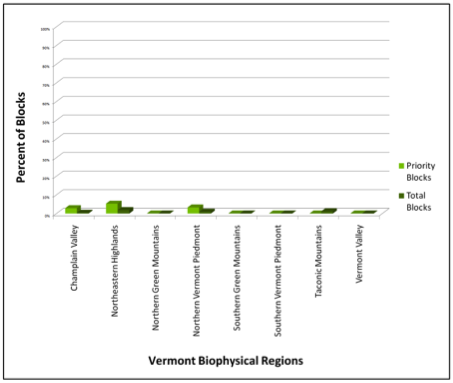|
Resident Conservation Status North American Range |
Found only in bogs with cranberries, this is one of Vermont’s smallest butterflies. The Bog Copper is a weak flier and because both larval host plants and adult nectar plants are often the same, these diminutive butterflies are often able to spend their entire lives within a small area of a single bog. Although colonies are uncommon in Vermont, there can be hundreds of individuals within a bog. Males perch on low plants to watch for females. Eggs are laid singly near cranberry; caterpillars feed on shoots and leaves. They overwinter, usually underwater, as fully developed larva in eggs.
Identification
Upperside of male brownish with purple iridescence; female dull gray-brown. Underside of both sexes white or pale tan; hindwing with very small black spots and red zigzag border on outer margin.
Flight
One flight beginning in early July and ending in late July. Extreme dates: 25 June 1993 in Rutland (J. Grehan, 25 June 1994 in Franklin (J. Grehan and S. Griggs), 30 June 2002 in Franklin (B. Pfeiffer), 29 July 2002 in Woodbury (B. Pfeiffer) and 1 August 1992 in Franklin (J. Grehan).
Distribution and Habitat
The Bog Copper is typically found in acid bogs with cranberries and other heath family plants, but it is not restricted to bogs. It can also occur in fens and very wet acid sedge meadows with cranberries rather than true bogs. Habitats may have some trees but are mainly open with permanently wet sunny substrates. It is important that the wetlands soils or sphagnum remain saturated for most or all of the year. Bog Copper caterpillars feed on cranberries (Vaccinium macrocarpum and V. palustris), and while cranberries can grow well on less saturated sites, Bog Coppers do not occupy such habitats. Areas can be colonized if there are sufficient populations nearby and at least small intervening ‘stepping stone’ habitats with hostplant that connect occupied and unoccupied areas. Populations that occur in isolated bog habitats and are not part of a large wetland complex are vulnerable to localized extinctions without recolonization.







